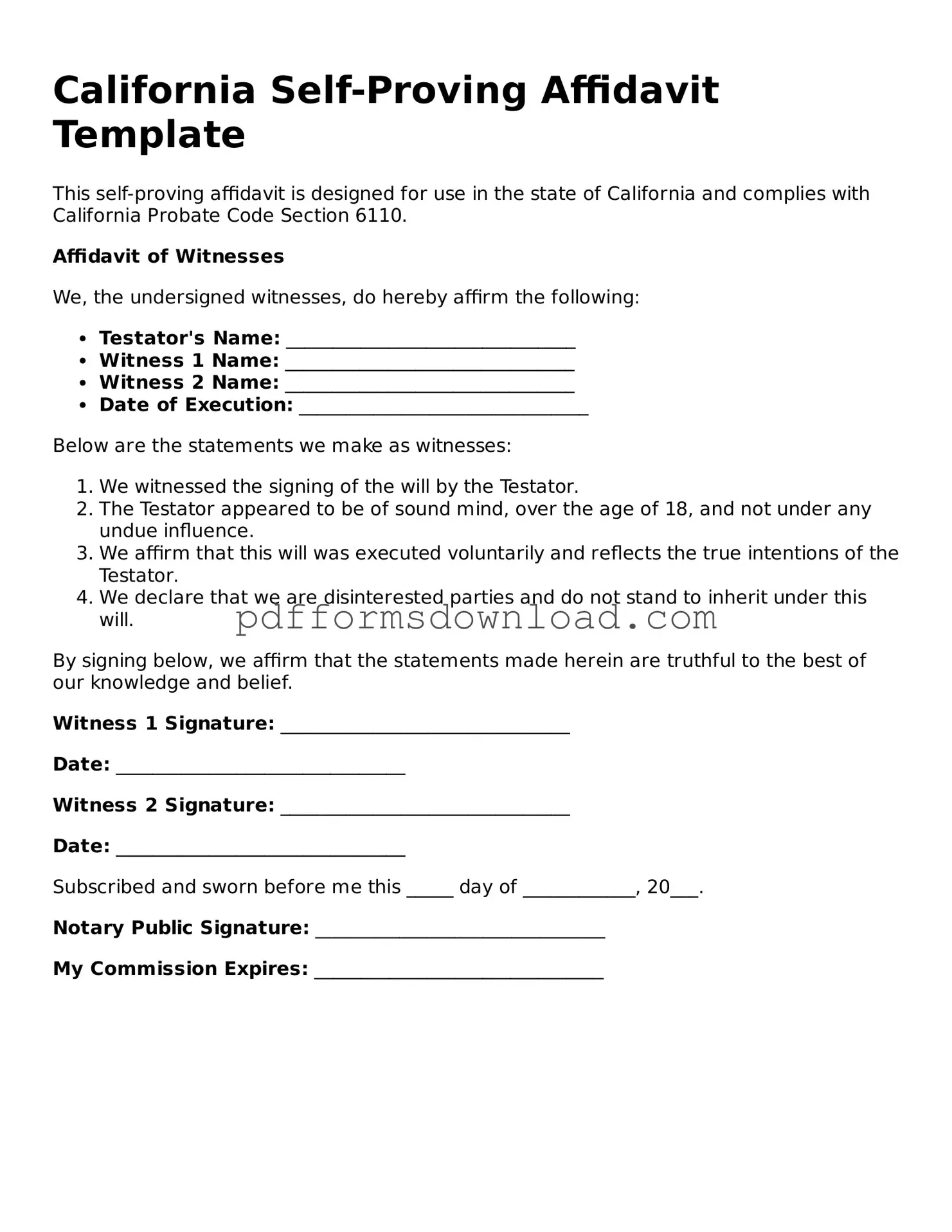What is a California Self-Proving Affidavit?
A California Self-Proving Affidavit is a legal document that allows a will to be validated without the need for witnesses to testify in court. This form is typically attached to a will and serves to confirm that the testator (the person who made the will) signed the document in the presence of witnesses, who also sign the affidavit, affirming its authenticity.
Why should I use a Self-Proving Affidavit?
Using a Self-Proving Affidavit can streamline the probate process. It eliminates the need for witnesses to appear in court, which can save time and reduce complications. This can be particularly beneficial if witnesses are unavailable or if their testimony could be challenged.
Who can create a Self-Proving Affidavit?
Any individual who is creating a will in California can include a Self-Proving Affidavit. This includes the testator and the witnesses who are present during the signing of the will. It’s important that the witnesses are not beneficiaries of the will to avoid potential conflicts of interest.
What information is included in the Self-Proving Affidavit?
The Self-Proving Affidavit includes the names of the testator and witnesses, the date of signing, and a statement confirming that the testator was of sound mind and not under duress. It also includes the signatures of the testator and witnesses, along with a notary public’s acknowledgment, if applicable.
Is notarization required for the Self-Proving Affidavit?
While notarization is not strictly required for the Self-Proving Affidavit to be valid, having it notarized can add an extra layer of authenticity. A notary public can verify the identities of the signers and provide an official acknowledgment, which may be beneficial during the probate process.
How do I file a Self-Proving Affidavit?
The Self-Proving Affidavit is typically filed with the will in probate court. When the will is submitted for probate, the affidavit should be included as part of the documentation. Ensure that all signatures are complete and that the affidavit is properly filled out before submission.
Can I revoke a Self-Proving Affidavit?
Yes, a Self-Proving Affidavit can be revoked or replaced if the testator decides to change their will or the accompanying affidavit. It’s important to create a new will and include a new Self-Proving Affidavit if changes are made to ensure that the most current wishes are legally recognized.
What happens if I don’t use a Self-Proving Affidavit?
If a Self-Proving Affidavit is not used, witnesses may need to testify in court to validate the will during the probate process. This can lead to delays, complications, and potential disputes, especially if witnesses are unavailable or if there are disagreements about the will's validity.
Where can I find a California Self-Proving Affidavit form?
California Self-Proving Affidavit forms can be found online through various legal websites, at local law offices, or through state court websites. It’s important to ensure that the form is up-to-date and complies with California laws to ensure its validity.
